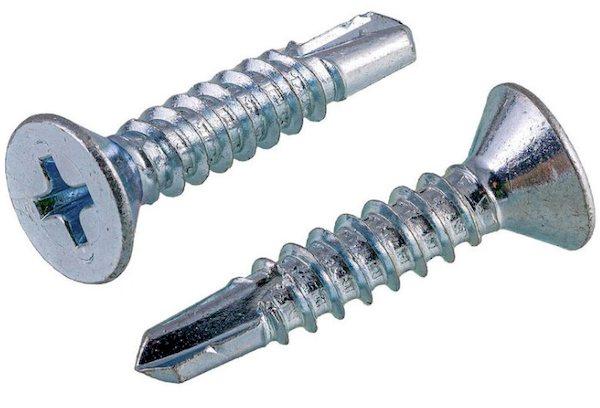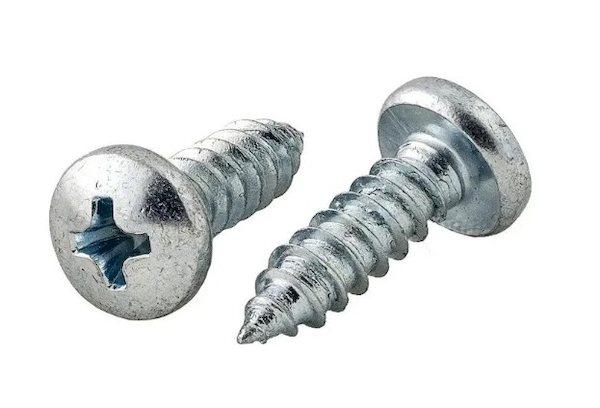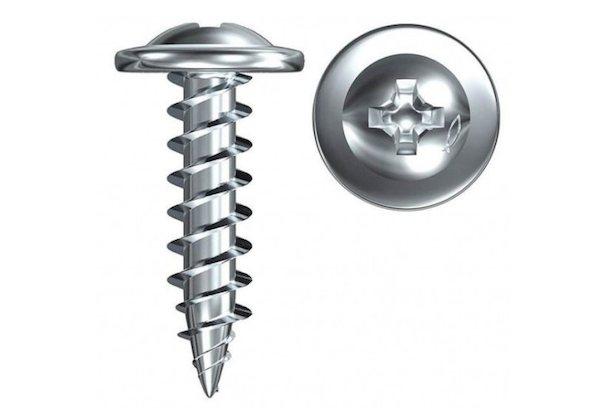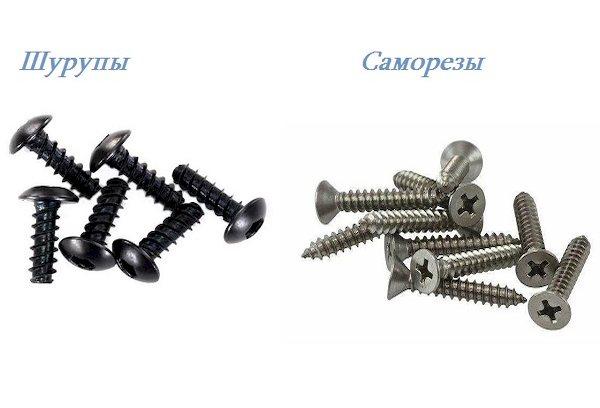What is the difference between a screw and a self-tapping screw
Content:
Fasteners for various purposes are very similar in appearance. To understand the difference between a screw and a self-tapping screw, it is worth looking at the method of their use. Screws are screwed into soft materials (plastic, wood), usually into a pre-drilled hole. The rod is 2/3 covered with a pointed thread with a fine pitch.
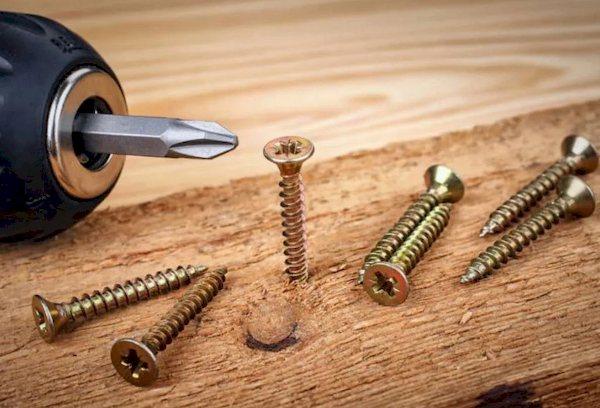
The core of the self-tapping screw is completely covered with wide pitch threads. The end of the self-tapping screw rod is drilled, so that when tightened, an internal thread is formed in the object being connected. In most cases, it is immediately screwed into the material. Use for drywall, wood, metal and other surfaces.
Comparative characteristics
The similarity of the design leads to confusion among non-professionals. Both types of fasteners look almost the same in appearance; they are tightened using the same set of tools (screwdriver, drill or screwdriver).
These hardware consists of the following elements:
- head for support when twisting;
- grooves-slots on the head;
- threaded rod;
- rod tip.
They are made from carbon steel, stainless steel and brass.To protect against corrosion, zinc coating and powder painting, as well as hardening by heat treatment, are used. The table below shows the main differences by which you can determine the type of fastener:
| Characteristics | Screw | Self-tapping screw |
| hat | - secret
- semicircular - confirmat — 4-6 edges |
- secret
- semicircular - with press washer - frustum - cylinder - 6 faces |
| Thread angle size | 45-60˚ | 20-40˚ |
| Heat treatment | Do not do | Allowed (black screws) |
| Additional thread elements | No | Drill bit, chip flutes, cutters |
| Cutting capacity in torque | Small | High |
| Requested length | 12-220 mm | 25-70 mm |
What is a screw
A screw is a fastener in which the screw thread on the rod extends from the gimlet at the conical end to 2/3 of its length. The difference with self-tapping screws is noticeable during installation - a hole is pre-drilled from half to the full length of the rod.
Suitable for joining parts made of relatively soft materials. Withstands large (compared to a self-tapping screw) loads. Recommended for collection at highly loaded points of frame structures. Tightening with a drill with the option of adjusting the speed is allowed.
| pros | Minuses |
| Wear resistance | Pre-drilling |
| Flexural and shear strength | More susceptible to corrosion |
| Confirmats are suitable for screeding furniture | Not suitable for hard materials |
What is a self-tapping screw
A self-tapping screw, or self-tapping screw, is capable of drilling a hole with its gimlet. Poorly withstands wave and lateral loads. Thermal hardening increases corrosion resistance, but increases the fragility of the metal. Installation in wood, metal, concrete and other materials is allowed.
There are universal self-tapping screws with two-turn threads suitable for wood and rolled metal. The length of the rod is determined by the thickness of the structure being fastened. You should choose fasteners that are slightly shorter so that the gimlet does not drill through the surfaces. Before screwing into wood, it is recommended to make several turns in reverse.
| pros | Minuses |
| Large selection of standard sizes | Low flexural and lateral shear strength |
| Suitable for many types of material | Requires special care when working with soft materials |
| Made from high quality alloys | The problem of the head coming off or the slot being torn off is common. |
What is better to choose
You cannot choose which of the two types of fasteners is better; each performs its own functions. In terms of properties, a screw differs from a self-tapping screw in terms of threading and application. If we talk about GOST standards, it contains the definition of “self-tapping screw”. That is, from a professional point of view, a self-tapping screw is a type of screw designed to connect structures without pre-drilling.
Questions and answers
Why does the screw spin in place?
The peculiarities of the screw thread lead to the fact that when you turn it again in one place (if the hardware has slipped or you didn’t guess the depth of the hole the first time), the threaded connection breaks off and the screw turns in place. You will have to choose fasteners with a larger diameter or try the following methods:
- Dip the rod generously into PVA glue, then into fine wood shavings, and insert it into the hole. After hardening, a sealing layer is formed around the thread.
- A wooden dowel of the same size is firmly driven into the hole, and then a screw is screwed in (do not aim directly at the center of the dowel so that it does not crumble.
How to unscrew a self-tapping screw with a torn head?
Self-tapping screws cannot withstand heavy bending loads, so craftsmen often encounter the head coming off. You won't be able to unscrew it with a screwdriver or a screwdriver. If the rod protrudes above the plane of the material, you should firmly grasp it with pliers and try to unscrew it by turning the tool counterclockwise. If you are unable to grab the fragment, you will have to drill the hole to a small depth (to the core of the screw) or widen it from above using a chisel.
When the head of the hardware is in place, but the slot is torn off, press a small piece of rubber tightly upward and attach a screwdriver. Additional adhesion to the surface allows you to unscrew the element. You can also use a grinder to deepen one of the slot grooves in order to unscrew it with a hand screwdriver.
Will a self-tapping screw hold in drywall?
Due to the fragility of drywall, self-tapping screws can be screwed in, but only with the correct work technique, otherwise the hardware will break through the cardboard layer. It is better to use a screwdriver, first screwing in the fasteners halfway, at maximum speed. Then reduce the speed to minimum and tighten, or screw in smoothly with a hand screwdriver.
The difference between a screw and a self-tapping screw is small in appearance, but it affects the properties and methods of installation of these hardware. Self-tapping screws have a wider range of applications, and screws are more resistant to bending and shearing. You should select fasteners based on the type of work and the material of the structure being screwed on.
